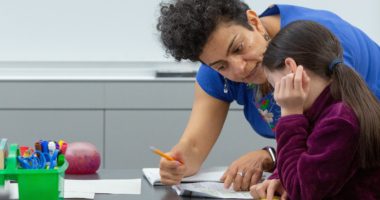It Takes a Teacher
When my brother was four and I was nine, I taught him how to read. At least, that’s what I thought at the time. I ran my finger under the words as I was reading and sounded out letters, and he figured out how to decode the words on the page.
Many years later, when I had a baby, I assumed I would do the same thing with her. It never occurred to me that I would need to rely on the school to teach her how to read.
But at a certain point when she was four or so, I realized that what I had done with my brother did not work with my daughter. I was just frustrating her and destroying our time together. Luckily, she had a very skilled and knowledgeable first-grade teacher, and she became a good reader in spite of my fumbling efforts.
Later I became familiar with some of the vast research on reading instruction, and I realized that while some kids can kind of intuit the phonetic code — much as my brother did — most need actual instruction in which sounds map onto which letters in the combinations that make up words — as my daughter did.
It was only then that I realized what a narrow escape we’d had. My kids went to school in a district and at a time when the “reading wars” were raging. Immersed in a whole-language philosophy, the school’s principal had forbidden teachers from systematically teaching the phonetic code (which sounds are represented by which letters and combinations of letters). Parents whose kids weren’t learning to read were told that eventually they would learn, and we were all made to feel guilty that we weren’t reading to our children enough.
Luckily, my daughter’s first-grade teacher was something of a guerilla teacher. I didn’t realize it at the time, but she hid her letter-sound instruction from the principal. She knew that most children needed instruction in how the alphabetic code works, and she provided it. Years later she told me that she lived for the moment when a first-grader’s face lit up as he realized that those squiggles on a page have a pattern that can be decoded.
In the Huffington Post this week, I talk about two new books that make clear the enormously important role teachers have in ensuring that all kids learn to read.











